O the Joy of Farm-fresh Eggs
Seems like it was almost a year ago the first time Charles brought home eggs purchased from one of his real estate buddies, Karen Owen, who kept a few hens on her acreage. They looked innocent enough—brown, large and sitting in cartons of a dozen. Just like the store-bought, egg-factory kind, which came from chickens that spent all of their lives indoors in a massive facility, laying away, as their food ran by in automated troughs, their little chicken feet probably never touching a blade of real grass. But we had a clue that something was off. These eggs weren’t all the same color. Some were pale green.
The suspicions grew when we first cracked one open. The yolk was eerily orange, bright like the sunshine. Mom and I knew something was different here. The color of the yolk was not pale like the store-bought variety. Something was amiss. We also noticed that the yolk was big, well-defined and stood up from the surface of the whites, as if it were trying to escape, like an alien that had just hatched. I had flashbacks to “The Invasion of the Body Snatchers,” which gave me nightmares as a kid.
And then there was the consistency of the whites. It wasn’t watery and runny like the store-bought kind. It congealed, clinging to the yolk.
Mom was the most skeptical. “There’s something wrong with these eggs!” she exclaimed. I was willing to give it a shot, and explained that these came from hens allowed to roam freely in someone’s yard, eating the wild critters that chickens presumably eat, as well as chicken feed.
Then we fried the eggs. As we ate them, notions of alien chickens from another planet were quickly dispelled as we marveled at how creamy, rich, almost buttery the yolks tasted. We were hooked.
With two suppliers providing us eggs regularly, we’ve seldom had to resort to store-bought eggs anymore. And when we do—because the hens aren’t laying or our supplier-friends are out of eggs—we notice the difference and sigh in regret when we taste the difference. We quickly fell in love with farm-fresh eggs, laid by happy free-range chickens.
It wasn’t until recently that mom, in a “Portlandia” moment, told Charles that she’d love to meet the chickens that provide us with their delicious bounty. For those of you not familiar with the IFC-channel TV series that lovingly lampoons the quirky side of the city we love just to the north of us, there’s an episode where the two main characters go to a restaurant to eat and decide that they want chicken, but they want to know the chicken’s pedigree, whether it was a happy chicken, where it came from, its living conditions. And the waitress obligingly tells them what she can. And then the diners decide they want to visit the chicken farm to see for themselves before ordering — and could the restaurant hold their table until they got back? Sure!
You can watch the episode on the video player below.
And so recently, having run out of eggs, Charles called up Karen and asked her if she had any, and … could we come visit the hens? Well, sure! We piled into the van and headed about fifteen minutes down the highway to Albany, where Karen lives with her husband in a home in a nice wooded area with acreage. When we drove up to the house it looked like all the other houses, until we noticed some odd creatures peering at us over a fence along the drive. They were wooly, tall, and camel-like — llamas. Charles explained that they belonged to Karen. And as Karen led us down the hill behind her house to a red metal barn, we started to get excited. Mom asked if the chickens lived inside. They did, Karen said, but also could roam the yard free.
She slid back the barn door and it was dark. Our eyes were trying to adjust, with light coming in only from the open barn door at the opposite end. “Where are the chickens?” Mom asked. Karen opened a gate inside the barn, we stepped through it, and she began calling to the chickens, who started coming in from outside. “Wow, they look so cute,” Mom said. I couldn’t resist getting my camera out to try to get her in a photo with the chickens, which proved harder than you might think. They’re not that big compared to humans, even to petite humans like Mom. And these chickens were bashful. But I did manage to get a shot of Mom calling to one of them. I think the chicken must have been thinking Who is this Chinese lady and what’s she doing in my barn? because it scurried outside after that. We followed, and that’s when we noticed the other chickens in the yard, with their light brown feathers and bright red cockscombs. We were too busy admiring the chickens to notice that the llamas had taken a sudden interest and were walking towards us. Karen got some llama feed and told us to scoop up some in our hands and open our palms up to the llamas. At first they were shy, but when one started eating out of our hands the others joined in. Their lips were covered in soft wooly fur. And even though I could see their huge teeth, they used their dextrous lips to gently grasp the feed pellets from our hands and eat them.
One llama was particularly fascinated with Mom and followed her around. I’m not sure if it was because mom was wearing one of her bright blue furry caps that she wears most of the year here to keep her head warm because her thinning hair. But Mom started talking to the llama, and for a moment, I swear, I thought the llama was going to kiss her.
The chickens, on the other hand, were not as friendly or as curious about their visitors as the llamas were. They just went about their business roaming the fields, eating bugs, being happy doing what chickens do, scratching the ground and eating insects.
As we left with three dozen eggs secure on the floorboard of the van and were waving goodbye to Karen and thanking her for letting us visit her animals, I was happy for our “Portlandia” moment — getting to meet the chickens that laid our eggs. As we drove off, the llamas looked at us from the field, heads and necks poking over the fence. Mom stared at them and said, “‘bye.” In the end, the llamas stole the show.
Mom in her woolly blue cap
— Vic
Category: Poultry
About the Author (Author Profile)
Victor Panichkul is a journalist and writer by training; a cook, wine lover and photographer by passion; and a lover of the outdoors since moving to Oregon more than 10 years ago. He is a native of Bangkok, Thailand.








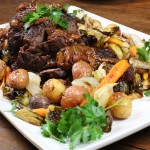

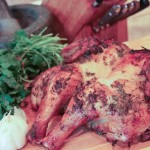


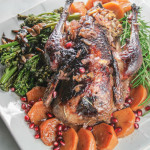
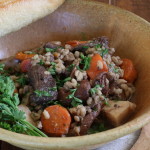
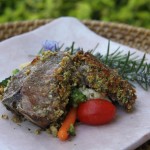

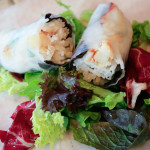





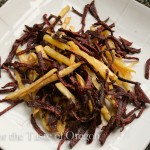


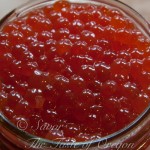
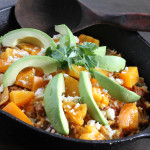

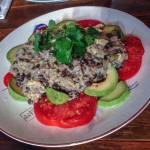

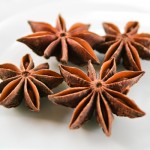
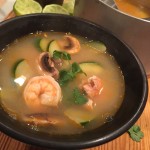
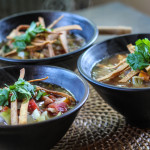




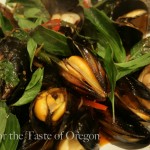
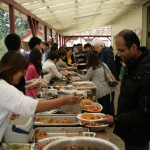





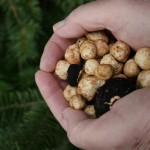



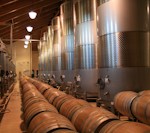
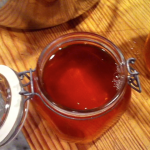




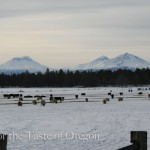
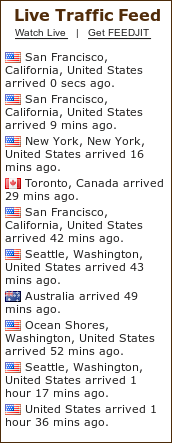





What a delightful story and having lived in the country and bought fresh farm eggs, a quarter a dozen, I understand what you are talking about. I enjoyed the pictures also.
Lovely story. I agree with it all — the yolks are so amazingly colored — and I think the shells of free-range hens are tougher, too. So glad that llama didn’t spit on your mom! (That’s what mine always did right after they pinned their ears.) Camelids, go figure.
Tried twice to reply and got cut off twice! Support your local farmers and go to your local farmers’ market and enjoy what Vic describes! Sorry I couldn’t share my personal story!
Barbara
Marlene: Thanks for your comment.
Julia: I hadn’t thought about the shells, but you’re right. I didn’t know about llamas spitting! I’m glad it didn’t spit on mom too!
Barbara: email me your story and I’ll add it to your comment for you. Thanks for reading!
— Vic
When we visited Oregon about 15 months ago and rented the house in Eugene where you, Charles, came to eat with us, it was the first time I saw the preference for free ranging chickens producing eggs in backyards. The basket of eggs each morning looked like the Easter Bunny had arrived and no dyeing was needed. Since our return to West Virginia and our efforts to eat as much local food as possible, we have been eating local free-range chicken and duck eggs almost exclusively. I also ran out and had to go to teh grocery store and we noticed the paleness…..we have gotten spoiled.
Thanks for the delightful story! Special time with my Dad was going to get the eggs- a weekly trip to a nearby farm. I’ve recently had the good fortune of both a farmer who sells from the ‘back porch’, two farmers @ two Farmers’ Markets. In a ‘pinch’ cage-free is available the market, but then the eggs have then been sized, and the ‘variety’ of colors is gone. My vote goes to the surprises in the crate that only come with ‘farm fresh’! hanks for the memories!!